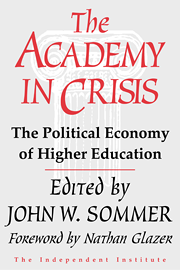The coronavirus public health emergency has triggered deep, and possibly lasting, changes in many industries and institutions—airlines, cruise ships, public schools, entertainment venues and other places where large numbers of people congregate in limited space. Colleges and universities, especially those with traditional on-campus residential models, are no exception.
The Department of Education and the Centers for Disease Control and Prevention (CDC) have issued specific guidance for higher education institutions to follow to prevent and respond to the COVID-19 outbreak. The CDC guidance includes advice on updating emergency operation plans, communicating with students and faculty, ensuring safe housing and meal deliveries, and coordinating with public health officials when making decisions to cancel classes or study-abroad programs. The Education Department’s guidance focuses primarily on flexibility in adjusting financial aid for students affected by class and internship cancellations that may reduce their credit load below the minimum level for eligibility.
The American College Health Association has issued guidance for student health centers on planning and responding to coronavirus outbreaks, including stockpiling appropriate medical supplies and informing the campus community.
Already, universities are beginning to cancel courses for the remainder of the winter term, shifting instruction and final examinations to an online format. Among the first were the University of Washington, University of Seattle, and the Seattle campus of Boston-based Northeastern University. Beyond the state of Washington, which to date has had the highest concentration of COVID-19 deaths, other universities are warning they may follow suit.
Duke University issued advice to students leaving for spring break on how to stay healthy, noting that classes could be canceled if any member of the campus community tests positive for the coronavirus. Yale University told students leaving for spring break to take essential items home in case the campus delays re-opening. Kahlil Greene, Yale’s undergraduate student president, noted that having spring break coincide with the disease outbreak made things more uncertain. “Everyone’s dispersing and then everyone’s coming back together. In many people’s minds, that makes it more likely that something is going to happen on campus,” Greene told the New York Times.
Many people remember the H1N1—or swine flu—outbreak in 2009, which affected between 11 and 21 percent of the global population, according to the Washington Post. Fortunately, its effects proved to be mild and it’s now part of the periodically-recurring family of flu-like viruses. Optimists hope that COVID-19 will be either completely eradicated or at least relegated to the same status as H1N1.
The longer-term impact on colleges and universities is likely to bring forward some opportunities. The most apparent benefit is online education. So many major universities have adopted online degree programs in recent years that opposition from old-school professors has dwindled. Most research on online college coursework has concluded that benefits outweigh its limitations. A 2017 study by the Brookings Institution noted, “Online courses offer the promise of access regardless of where students live or what time they can participate, potentially redefining educational opportunities for those least well-served in traditional classrooms. Moreover, online platforms offer the promise, through artificial intelligence, of providing the optimal course pacing and content to fit each student’s needs and thereby improve educational quality and learning.”
Online education mostly originated in the for-profit sector of higher education around 20 years ago, and during its formative period, it was roundly criticized for lower quality curriculum design, susceptibility to student cheating, and lack of classroom support services. Fortunately, as technology improved and competition arose, including nonprofit competitors, the online experience today offers many features that arguably improve upon the traditional “chalk and talk” classroom. The regulatory purge of many poor-quality for-profit schools during the Obama administration has left a more responsible cadre of higher-quality for-profits remaining in the online space.
Experts in online higher education report a strong interest in adopting online courses from universities that have had little or no online presence. Luyen Chou, chief learning officer for 2U, sees the coronavirus scare as part of a longer-term trend toward more online coursework. “Events like the coronavirus give you a short-term spike in interest, but this is part of a much larger trend,” Chou observes.
New public health menaces also have expanded higher educational marketplaces for health care education. The 10-year employment growth contained in the Department of Labor’s 2018 Occupational Outlook Handbook projects nearly 155,000 new jobs for medical assistants, a 23 percent growth rate (considered much faster than average), and more than 35,000 new jobs for clinical lab technologists, an 11 percent growth rate. Importantly, these projections were made before the emergence of COVID-19.
These are just two of the health care jobs on the front lines of the response to the coronavirus outbreak. Medical assistants typically are the “first faces” people see in their doctor’s office, checking vital signs, updating medical charts and performing routine tests. Clinical lab technologists will perform the lab work on COVID-19 test kits. Both medical assistants and entry-level lab technologists can be trained within one or two academic years. Most, and sometimes all, of the coursework can be offered online.
Higher education has been reshaping itself for the past decade because of disruptive changes brought about by dramatic shifts in the labor force, new technologies and differences in generational preferences for gaining knowledge and skills. The coronavirus is yet another type of disruption likely to accelerate the radical transformation of higher education.









